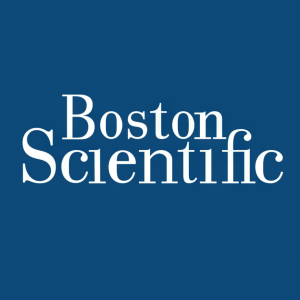Boston Scientific Announces Positive Late-Breaking Clinical Trial Data for the Ranger™ Drug-Coated Balloon
Boston Scientific announced positive results for the Ranger™ Drug-Coated Balloon (DCB) during the VIVA meeting in Las Vegas on October 5, 2021. The two-year results from the RANGER II SFA trial showed a primary patency rate of 84.0% for Ranger DCB, significantly higher than 71.4% for standard PTA (p=0.0129).
Also noted was an 87.4% freedom from target lesion revascularization for Ranger DCB versus 79.5% for PTA (p=0.0316). No significant difference in all-cause mortality was observed.
- Two-year primary patency rate of 84.0% for Ranger DCB vs. 71.4% for standard PTA (p=0.0129).
- Freedom from target lesion revascularization rate of 87.4% for Ranger DCB vs. 79.5% for PTA (p=0.0316).
- High efficacy maintained in patients with complex lesions.
- None.
Insights
Analyzing...
LAS VEGAS and MARLBOROUGH, Mass., Oct. 5, 2021 /PRNewswire/ -- Today, Boston Scientific (NYSE: BSX) announced positive results for the Ranger™ Drug-Coated Balloon (DCB) during a late-breaking clinical trial presentation at the Vascular InterVentional Advances (VIVA) meeting in Las Vegas. The data included two- year results from the RANGER II SFA randomized controlled trial, confirming the safety and efficacy of the Ranger DCB compared to standard percutaneous transluminal angioplasty (PTA) for the treatment of patients with peripheral artery disease (PAD) in the superficial femoral artery (SFA) and proximal popliteal artery (PPA).
Following the positive one-year results of RANGER II SFA, which were published in the Journal of American College of Cardiology, the new two-year results found that the Ranger DCB exhibited a significantly higher primary patency rate – a measure of the target vessel remaining unobstructed at two years – of
"These two-year data demonstrate a sustained, high rate of efficacy including in patients with more complex lesion subtypes, yet another proof point for physicians to consider when determining the best individualized treatment option for their patients with PAD," said Ravish Sachar, M.D., UNC Rex Hospital physician-in-chief for Heart and Vascular services and principal investigator of the RANGER II SFA trial.ii
The Ranger DCB, which has a low drug dose density of paclitaxel, also demonstrated a significant reduction in reinterventions at two years with a freedom from target lesion revascularization (TLR) rate of
"We're very pleased to see that the Ranger DCB exhibited excellent, sustained results at two years and it is particularly gratifying that the RANGER II SFA subgroup analyses found no reintervention disadvantage for women, who have historically experienced greater patency challenges following endovascular intervention for PAD," said Michael R. Jaff, D.O., chief medical officer and vice president clinical affairs, technology and innovation, Peripheral Interventions, Boston Scientific.
Late-breaking results from the EMINENT trial, which evaluated the Eluvia™ Drug-Eluting Stent vs. bare-metal stents, will be presented tomorrow, October 6, at the VIVA21 conference.
For more information on the Ranger DCB, visit https://www.bostonscientific.com/rangerclinicaltrials.
About Boston Scientific
Boston Scientific transforms lives through innovative medical solutions that improve the health of patients around the world. As a global medical technology leader for more than 40 years, we advance science for life by providing a broad range of high performance solutions that address unmet patient needs and reduce the cost of healthcare. For more information, visit and connect on Twitter and Facebook.
Cautionary Statement Regarding Forward-Looking Statements
This press release contains forward-looking statements within the meaning of Section 27A of the Securities Act of 1933 and Section 21E of the Securities Exchange Act of 1934. Forward-looking statements may be identified by words like "anticipate," "expect," "project," "believe," "plan," "estimate," "intend" and similar words. These forward-looking statements are based on our beliefs, assumptions and estimates using information available to us at the time and are not intended to be guarantees of future events or performance. These forward-looking statements include, among other things, statements regarding our business plans, clinical trials, product launches and product performance and impact. If our underlying assumptions turn out to be incorrect, or if certain risks or uncertainties materialize, actual results could vary materially from the expectations and projections expressed or implied by our forward-looking statements. These factors, in some cases, have affected and in the future (together with other factors) could affect our ability to implement our business strategy and may cause actual results to differ materially from those contemplated by the statements expressed in this press release. As a result, readers are cautioned not to place undue reliance on any of our forward-looking statements.
Factors that may cause such differences include, among other things: future economic, competitive, reimbursement and regulatory conditions; new product introductions; demographic trends; intellectual property; litigation; financial market conditions; and future business decisions made by us and our competitors. All of these factors are difficult or impossible to predict accurately and many of them are beyond our control. For a further list and description of these and other important risks and uncertainties that may affect our future operations, see Part I, Item 1A – Risk Factors in our most recent Annual Report on Form 10-K filed with the Securities and Exchange Commission, which we may update in Part II, Item 1A – Risk Factors in Quarterly Reports on Form 10-Q we have filed or will file hereafter. We disclaim any intention or obligation to publicly update or revise any forward-looking statements to reflect any change in our expectations or in events, conditions or circumstances on which those expectations may be based, or that may affect the likelihood that actual results will differ from those contained in the forward-looking statements. This cautionary statement is applicable to all forward-looking statements contained in this document.
CONTACTS:
Karin Dalsin
Media Relations
(763) 494-1914
Karin.Dalsin@bsci.com
Lauren Tengler
Investor Relations
(508) 683-4479
BSXInvestorRelations@bsci.com
i Kaplan Meier Estimate
ii Dr. Ravish Sachar is a paid consultant for Boston Scientific Corporation. He has not been compensated for his quote within this press release.
![]() View original content to download multimedia:https://www.prnewswire.com/news-releases/boston-scientific-announces-positive-late-breaking-clinical-trial-data-for-the-ranger-drug-coated-balloon-301393234.html
View original content to download multimedia:https://www.prnewswire.com/news-releases/boston-scientific-announces-positive-late-breaking-clinical-trial-data-for-the-ranger-drug-coated-balloon-301393234.html
SOURCE Boston Scientific Corporation








